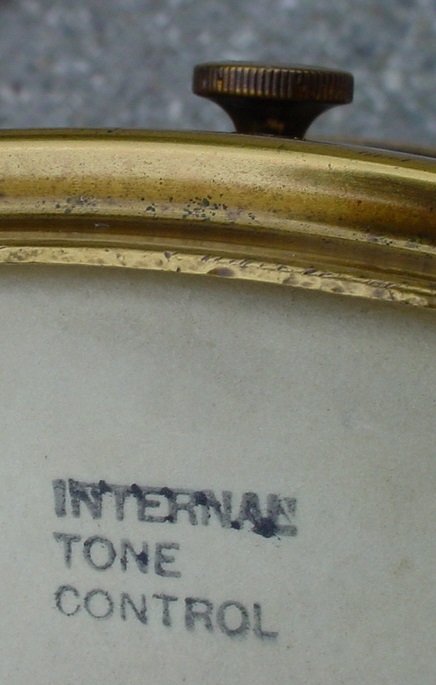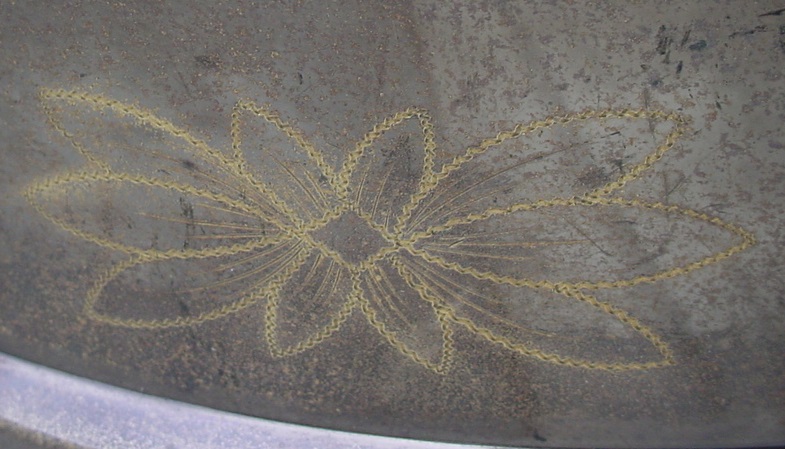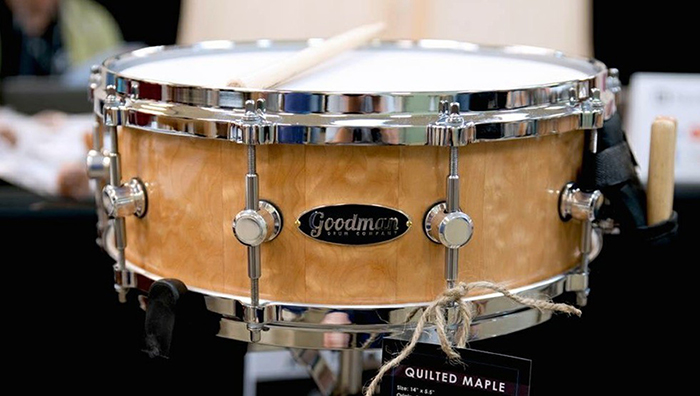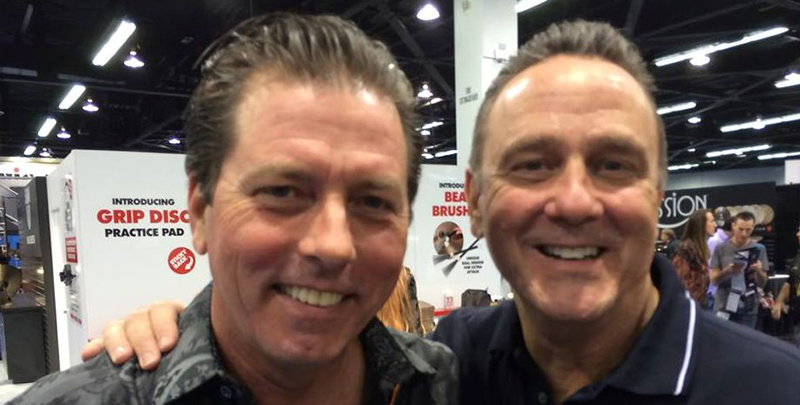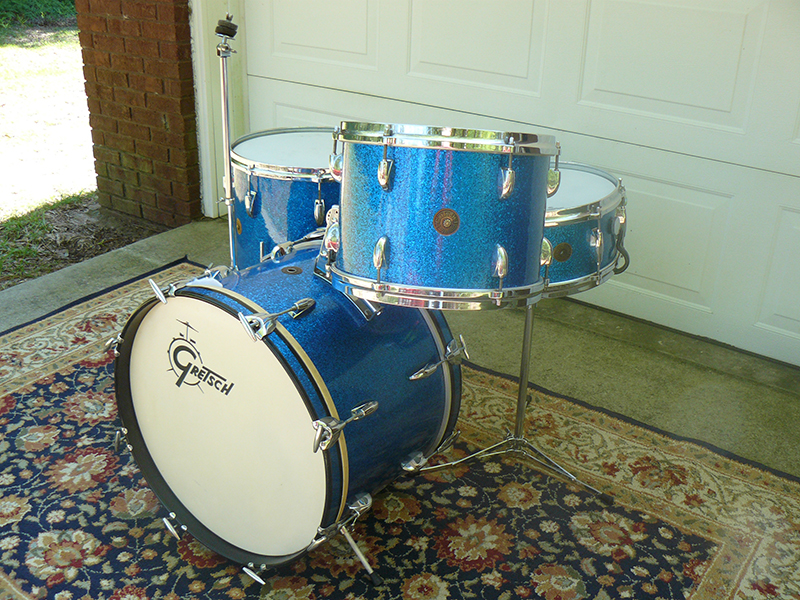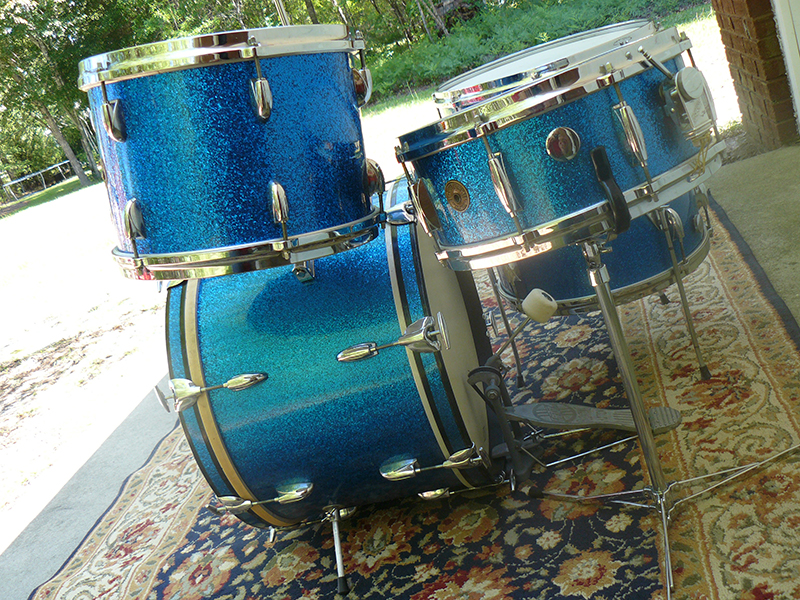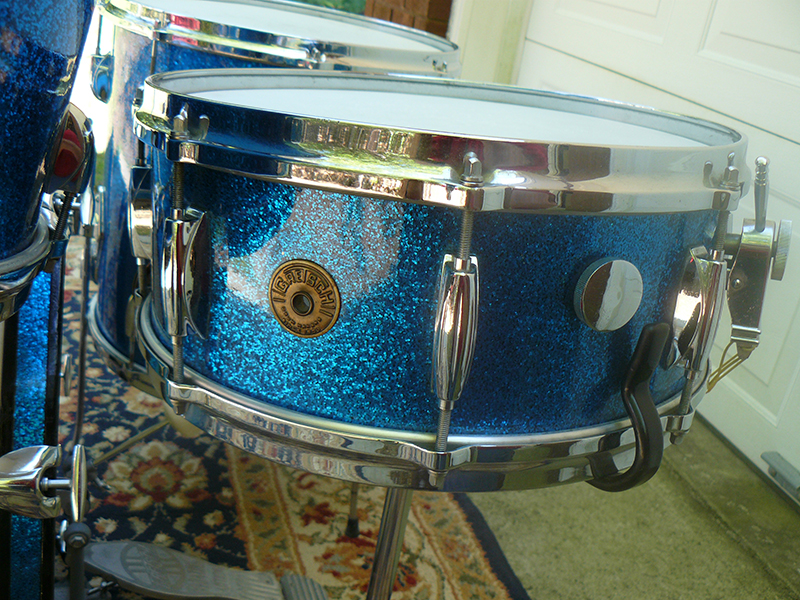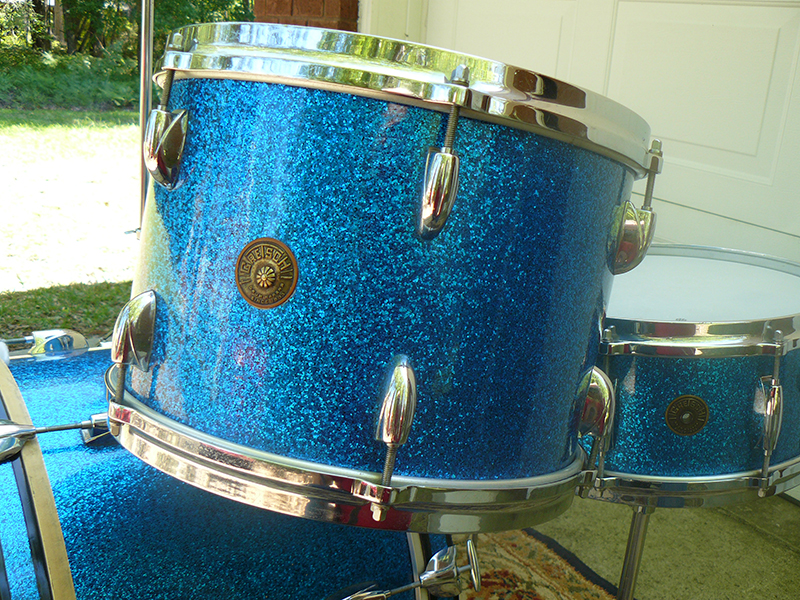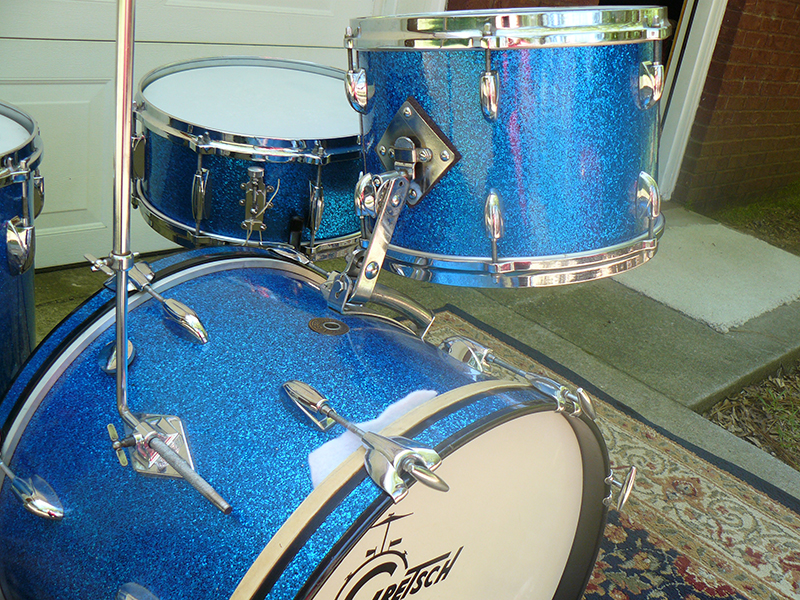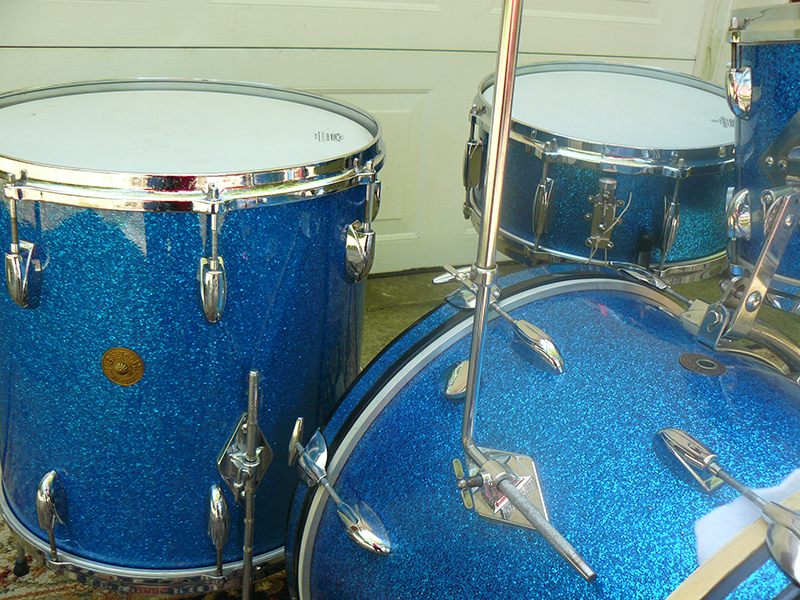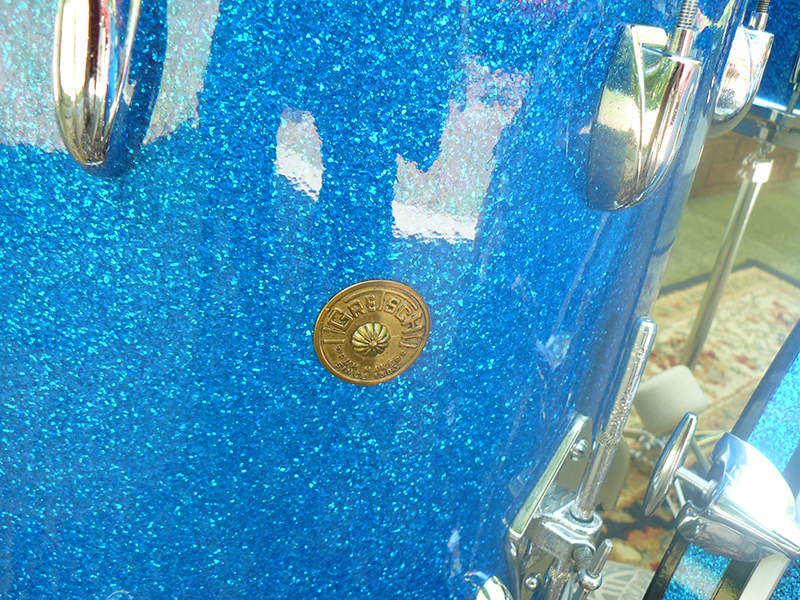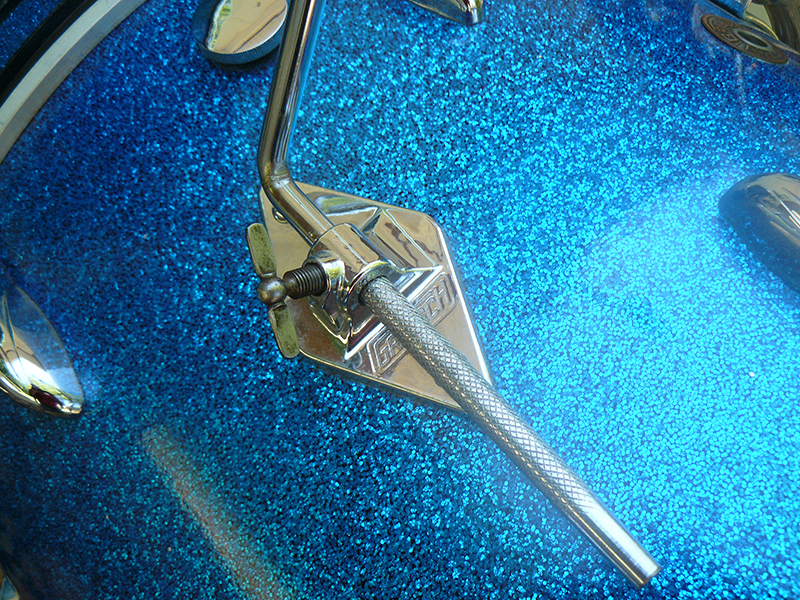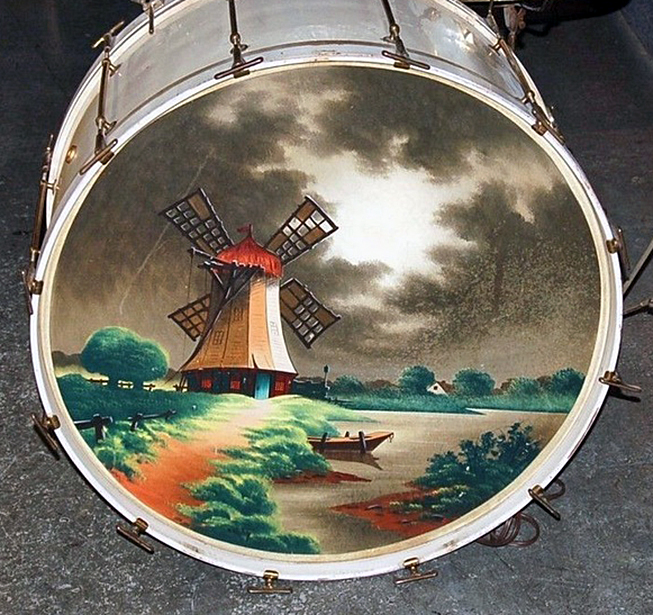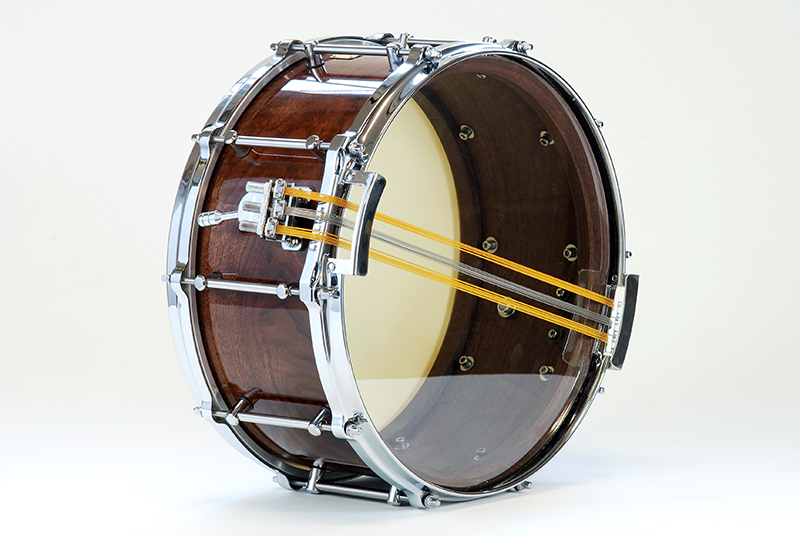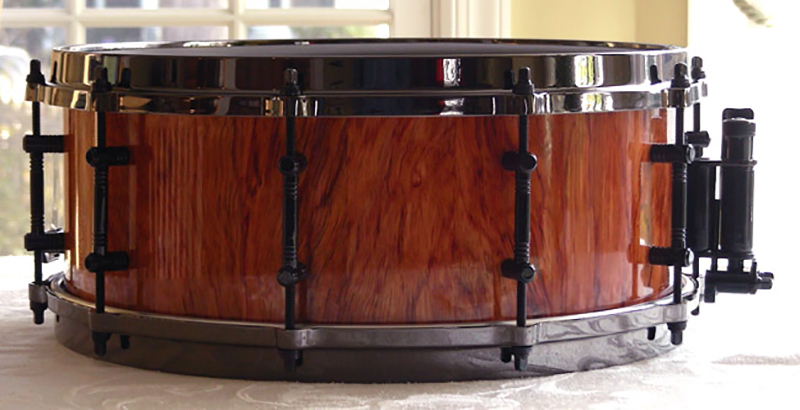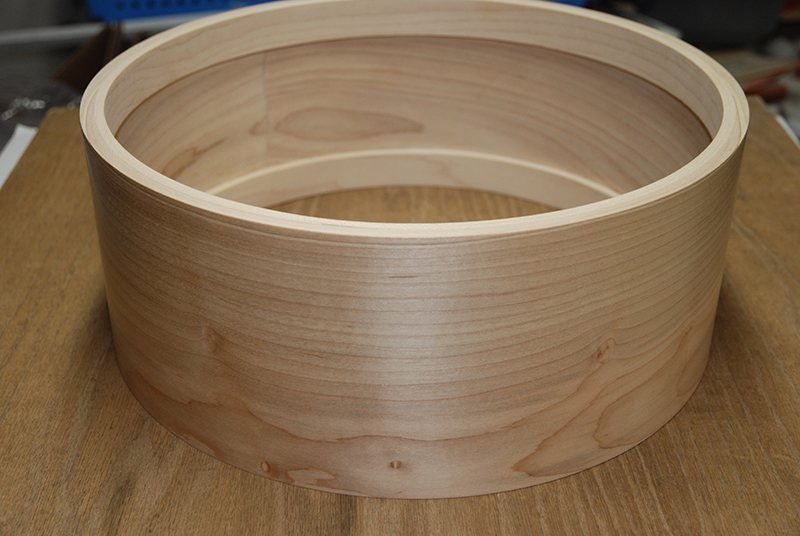By Mike Curotto
1935-36 LUDWIG & LUDWIG 6.5 x 14 SILVER ANNIVERSARY BLACK BEAUTY
Hi all,
Here’s another snare that I was able to add to the collection...fresh from the 2015 Chicago Vintage Drum Show. I got this drum from Joe Luoma, he had one to spare so we sealed the deal over the phone 3 weeks prior to the Show and culminated the deal at the Show. Thanks goes to Joe for helping me to add another cool and very rare drum to my collection. Joe’s drums are always pristine so this was an easy cleaning.
The SHELL:
The “sparse” later 1930s 10 pt. floral engraving pattern is clean and in good shape. The black nickel is also in good condition with some normal “freckling” that is to be expected on an 80 year old drum. I just gave the shell a minor cleaning with some lemon oil and all is good.
The HARDWARE:
Around 1932 Ludwig changed their Artgold (bright copper plating /gold lacquer) DeLuxe hardware option to Classic Gold (brass plating/ yellow gold lacquer). The Classic Gold on this snare drum was in very good condition and only needed a basic cleaning. The threads on the tension rods needed the most cleaning. One side of one of the tapped Imperial lugs was stripped but my good friend Al Schneider, The Drum Doctor, did his magic with a 12-24 Heli-Coil and as I’ve mentioned before, do not let stripped “Anniversary” lugs be a deal killer, there is a fix, a 12-24 Heli-Coil is the correct fix.
Of-the-era calf heads (note the tone control stamp on the top head) and James Snappi wires rounded out this simple cleaning.
Silver Anniversary Black Beauties are extremely rare, there are only 5 known at this writing and every one is different but I do realize that there is always the possibility that there are others out there. Be sure to weigh-in if you see or hear of another Silver Anniversary Black Beauty out there in vintage drum land.
Here’s a list of the 5 known Silver Anniversary Models:
- 5 x 14 gold plated Standard Model (Joe Luoma Collection)
- 5 x 14 gold plated Super-Ludwig Model (Joe Luoma Collection)
- 6.5 x 14 chrome plated Standard Model (Bun E. Carlos Collection)
- 4. 5 x 14 chrome plated Super-Sensitive Model (Mike Curotto Collection)
- 6.5 x 14 Classic Gold Standard Model (Mike Curotto Collection)
Enjoy!





